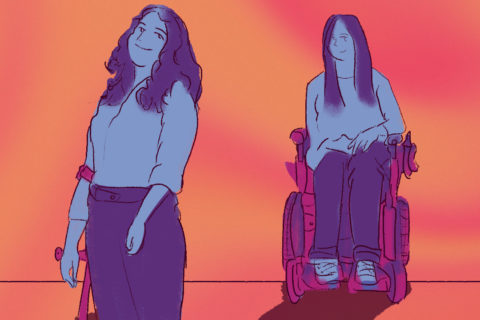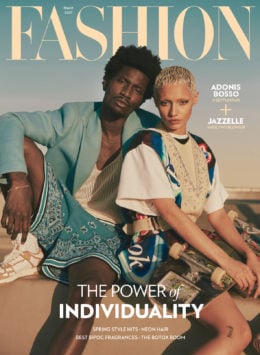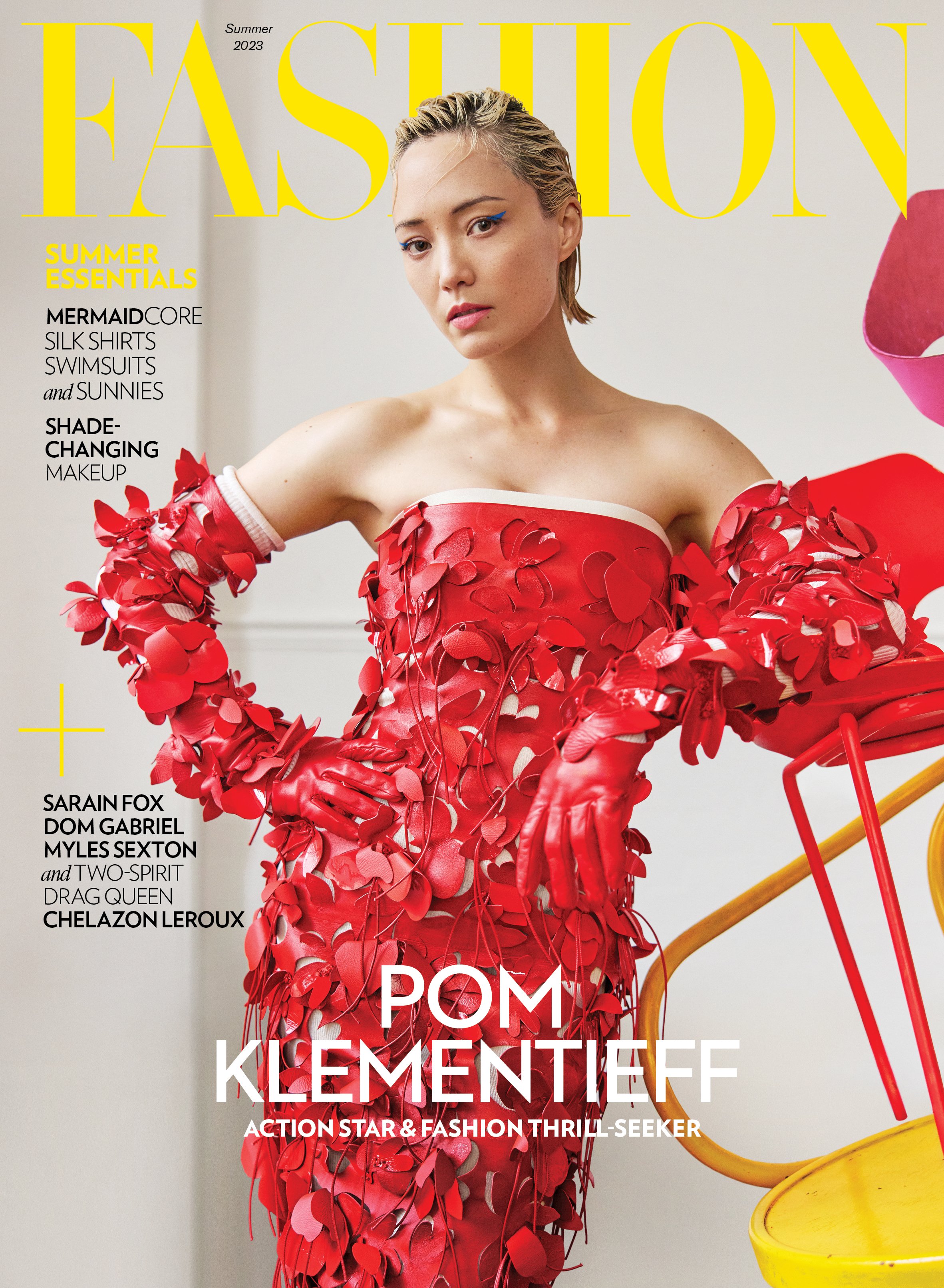7 Adaptive Fashion Brands to Follow (and Buy!)
These designers—and their brands—are changing the fashion industry for the better
When some people hear the words “adaptive clothing,” their minds may instantly jump to images of sweatsuits and velcro closures. But, in actuality, adaptive clothing—a term used to describe clothing for people with disabilities and medical conditions that make getting dressed challenging—is super chic and stylish thanks to a handful of designers who are raising the bar. Because why should using a wheelchair or medical device mean you have to sacrifice style? (For the record: Sweatsuits are totally cute and comfy, but sometimes we all want to dress up a little).
For people with disabilities, it can be challenging to find the right fit that makes you feel good when both online and IRL stores aren’t exactly packed with inclusive styles; but shopping doesn’t—and shouldn’t—have to be difficult. Slowly, more and more designers are emerging with accessible lines. That includes clothing for wheelchair users, but it can also mean accommodating sensory needs for people with autism, hidden openings for insulin pumps and so much more.
It’s imperative that designers think about accessibility when creating their products in order for everyone to feel good in their fave brands *and* be able to show off their sense of style. Here, a round-up of designers you can turn to for the next time you’re looking for a cute ensemble that fits your needs.
Izzy Camilleri, IZ Adaptive
https://www.instagram.com/p/BstGsURhK_6/
Toronto-based designer Izzy Camilleri first got into adaptive fashion in 2004, when she created custom clothing for a wheelchair-using customer. The experience made Camilleri realize that there was a gap in the fashion industry. That’s when she decided to launch her own adaptive line IZ (pronounced “Izzy”) with simple, timeless style in mind. Many of her pieces have accessible elements subtly built into the back, while the front looks like any other piece of clothing. Jeans, for example, are made without pockets to protect a seated person from pressure sores, and there’s often elastic at the back of the waistband for comfort and stretch. Trench coats are cut short in the back so wheelchair users don’t have to sit on them, while the front covers the lap and protects from snow and rain. Since she launched her line, Camilleri has worked with celebrities like Meryl Streep, Angelina Jolie and Daniel Radcliffe—no big deal.
Marta Elena, Abilitee
https://www.instagram.com/p/CAGfY0LAGmX/
Marta Elena is the co-founder of Abilitee, a collection with pieces featured by Aerie. Tired of seeing practical yet unattractive adaptive designs, Elena decided to make a brand that is fun and fashionable. Abilitee has cheeky ostomy bag covers emblazoned with “hot shit,” brightly coloured catheter clips and insulin pump belts that look like running belts. She and co-founder Dr. Julie Sanchez made their first design for a young boy who needed an adaptive shirt for his feeding tube. With their medical and fashion backgrounds, the pair decided to expand their designs for diverse medical needs.
Sophie Ternest and Debbie Provoost, So Yes
https://www.instagram.com/p/CAKrLKzpkxY/
Sophie Ternest and Debbie Provost were both working as occupational therapists when they felt they needed to do something to make getting dressed easier for people with disabilities. In 2016, they launched the So Yes line, which includes skirts built for a seated frame, elastic-waist pants and jackets with magnetic zippers, which can be put on using only one hand. Their “wheelchair trousers” are designed with zippers on the sides for easier access when using the washroom. The store itself is in Belgium, but you can shop their collection online.
Marie Pier Fortin, Mode Ézé Plus
https://www.instagram.com/p/B7koKOFgwEh/
Mode Ézé Plus is a family-run adaptive clothing business based in Quebec. Marie Pier Fortin is one of three co-owners and the company’s director of international production. With a diploma in fashion design, she creates the seasonal collections and is constantly on the lookout for how to adapt new trends. Bras open in the front and sweaters, dresses and other items have secret snap openings at the back while giving the illusion of a mainstream clothing item that slips on or zips up.
Tommy Hilfiger, Tommy Adaptive
https://www.instagram.com/p/CAXfnlUhi6K/
This classic preppy brand partnered with Mindy Scheier to launch an adaptive line for children in 2016, and an adult line the following year. Pieces include relaxed-fit boyfriend jeans with hidden Velcro fasteners, wrap dresses with magnetic closures and tagless T-shirts with flat seams for sensory comfort. All the items still have Tommy’s classic American style and brand colours, just with hidden accessible elements.
Scheier started designing adaptive clothing when her then eight-year-old son Oliver—who has a form of muscular dystrophy—wanted to wear jeans to school like his friends but couldn’t do up the button. Not wanting sweatpants to be his only alternative, Scheier adjusted her son’s jeans so that he could easily pull them on. She launched the Runway of Dreams Foundation in 2014, which educates people about disability and partners with organizations that empower differently abled people. Though not currently designing her own line, Scheier works as a consultant for other brands like Tommy, and was on the design team at Saks Fifth Avenue in New York City, where she created design innovations that other brands used for their own adaptive lines.
Heidi McKenzie, Alter Ur Ego
https://www.instagram.com/p/BbuWqltnEPT/
After becoming paraplegic in 2007 at the age of 21, Heidi McKenzie decided to break down fashion barriers for people with disabilities. The Kentucky-based designer launched the Alter Ur Ego collection of adaptive jeans with plenty of accessibility features. From thigh-front pockets to a hidden catheter opening and a faux fly, McKenzie made sure to bring accessibility and style together.
Tobie Hatfield, Nike
https://www.instagram.com/p/4IPnxhAUYa/
Tobie Hatfield is the Senior Director of Athlete Innovation at Nike, according to LinkedIn. While Hatfield has been designing with the company for years — even working with Tiger Woods to develop golf shoes in 2017—the Nike FlyEase shoe was a different kind of project for him. In 2012, high school student Matthew Walzer sent Nike a letter detailing his struggle to put on his running shoes due to his cerebral palsy. The letter ended up in Hatfield’s hands, and led to him designing a sneaker that can open at the back without laces. Hatfield worked with Walzer to develop a prototype that worked for him and, after three years, he launched the Nike FlyEase shoe. Hatfield has also created spike pads for Paralympic athlete Scout Bassett, who competes with one leg after a fire accident as a child. The pads fit a prosthetic blade, which acts as a second leg for the runner.






